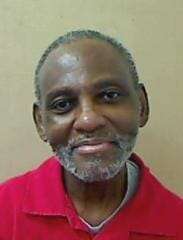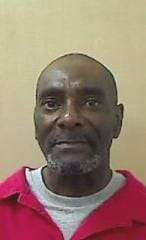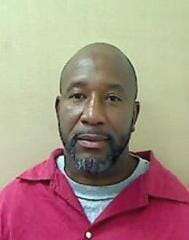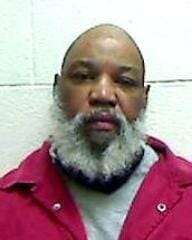
Tony Sidden was sentenced to death by the State of North Carolina for a triple murder. According to court documents Tony Sidden would lock two boys in the trunk of his car while he murdered their father Gary SIdden. Tony Sidden would then murder the two boys Garry Sidden Jr., 16, and his brother, Galvin, 10. Tony Sidden would be arrested, convicted and sentenced to death
North Carolina Death Row Inmate List
Tony Sidden 2021 Information
| Offender Number: | 0368820 |
| Inmate Status: | ACTIVE |
| Gender: | MALE |
| Race: | WHITE |
| Ethnic Group: | UNKNOWN |
| Birth Date: | 07/13/1947 |
| Age: | 73 |
| Current Location: | CENTRAL PRISON |
Tony Sidden More News
Between 10:00 p.m. and 10:30 p.m. on 21 July 1982, defendant, then 15 years old, went with his stepfather, Tony Sidden, to the property of Garry Sidden, Sr. in Wilkes County, North Carolina. Garry Sidden, Sr. *730 owned a mobile home, grocery store and nightclub about a quarter of a mile from the mobile home where defendant and Tony Sidden lived. In a statement later made to police, defendant explained that he and his stepfather had planned to rob and kill Garry Sidden but that defendant had only “really discussed” the robbery. Tony Sidden apparently sought revenge for a previous incident in which Garry Sidden, Sr. had shot Tony. Defendant sought money with which to buy a dune buggy.
Tony Sidden and defendant parked a car on a logging road two hundred yards behind Tony’s mobile home and walked to the property of Garry Sidden, Sr. Each carried a 12-gauge shotgun; defendant also carried a.38-caliber pistol. They positioned themselves near a shed located about thirty yards behind Garry Sidden, Sr.’s mobile home and waited for Garry Sidden, Sr. to come home from his nightclub. After thirty minutes defendant “got tired of waiting” and walked to Garry Sidden’s mobile home and looked in the window. He saw Garry Sidden asleep on the living room couch. Defendant motioned for Tony to come down to the mobile home and the two waited there. Not long after, defendant saw Garry Sidden’s two sons, Garry, Jr. and Galvin, walking toward their father’s mobile home, from the nightclub. Garry, Jr. was sixteen years old and Galvin was ten years old at the time. Defendant and Tony Sidden forced the boys into their father’s mobile home at gunpoint.
Once inside, either defendant or Tony Sidden told the boys to go into the kitchen and lie down. Garry, Sr. then awoke and Tony Sidden and defendant pointed their guns at him and told him to reveal “where the money was.” Agitated, Garry, Sr. began to raise his voice, so Tony Sidden shot a hole in the mobile home above Garry, Sr.’s head to quiet him.
Tony Sidden and defendant eventually ordered Garry, Sr. and his two sons out of the mobile home. Once outside, Garry, Sr. grabbed for Tony’s shotgun and the two began to wrestle. Defendant shot Garry, Sr. in the back, causing him to fall. Tony Sidden then shot Garry, Sr. in the neck. After placing his hand on Garry, Sr.’s chest to confirm that he was dead, defendant took Garry, Sr.’s wallet containing over $300.00.
Tony Sidden and defendant then marched the two boys to the car they had parked earlier, forced the boys into the trunk and closed the lid. After driving awhile, Tony Sidden stopped the car on a dirt road and ordered the two boys out of the trunk. Leaving his .38-caliber pistol in the car, defendant stepped away to urinate. When he returned, Tony Sidden was forcing the boys to lie face-down on the road. Defendant asked Tony Sidden, “What are we going to do?” Tony Sidden replied, “We’ve got to shoot them.” Defendant, carrying his shotgun, turned and walked a few feet away. Tony Sidden then shot each boy in the head with defendant’s .38-caliber pistol. Tony Sidden and defendant left the two bodies where they lay and drove about three hours away to Spring Lake, in Cumberland County, North Carolina.
Defendant testified at trial that he had not shot the boys and had not wanted them shot. He had thought the boys would be tied up in the woods so that he and Tony Sidden could escape. Although defendant was armed and did not intervene to attempt to spare the boys’ lives, he testified “there was not a lot [he] could do” to prevent their deaths.
Tony Sidden and defendant stayed at Spring Lake for the rest of the night and the following day. At some point during the day, defendant tossed the pistol into a nearby pond. That evening Tony Sidden asked defendant to return to Wilkes County to dispose of the boys’ bodies. Defendant agreed to do so and drove back alone to Wilkes County. He found the bodies undisturbed, dragged them to the car and put them in the trunk. He then drove to an abandoned well on property once rented by his family in nearby Miller’s Creek, North Carolina. Defendant dumped the two bodies into the well, poured lime and drain cleaner into the well to “take care” of the bodies, and covered the well opening with logs before returning to Cumberland County.
Tony Sidden and defendant remained at Spring Lake for several days until they learned from a television report that warrants *731 had been issued for their arrest in conjunction with Garry Sidden Sr.’s murder. They fled North Carolina and lived in several states before eventually turning themselves in to authorities in September 1983. Tony Sidden and defendant were subsequently tried together and convicted for the first-degree murder of Garry Sidden, Sr. The trial court sentenced each of them to life imprisonment for that murder and this Court found no error in the trial. State v. Sidden, 315 N.C. 539, 340 S.E.2d 340 (1986). The fate of the two boys remained unknown, however, until defendant, serving his life sentence for the murder of Garry Sidden, Sr., confessed to the facts set out above on 30 August 1991. In September 1991, he led the police to the bodies of the two boys. Thereafter, defendant was charged with their murders and kidnappings, which are the subject of this appeal.
https://law.justia.com/cases/north-carolina/supreme-court/1994/341a92-0.html



